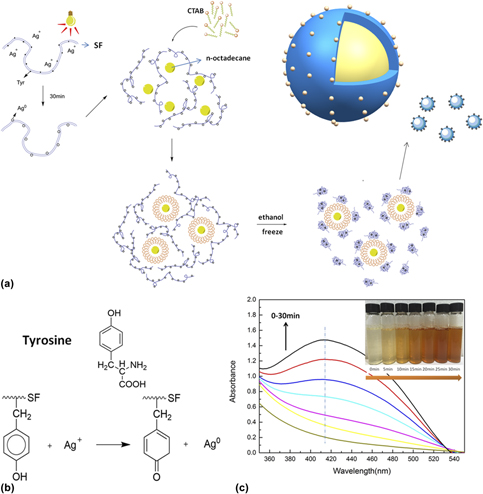Article contents
Fabrication and characterization of microencapsulated n-octadecane with silk fibroin–silver nanoparticles shell for thermal regulation
Published online by Cambridge University Press: 07 March 2019
Abstract

Novel microencapsulated n-octadecane with natural silk fibroin (SF) shell attached with silver nanoparticles (AgNPs) on its surface was synthesized in oil-in-water emulsion via a self-assembly method. No additional reductant was used in the in situ preparation of AgNPs due to the inherent reduction property of tyrosine (Tyr) residues in SF. The microstructures and particle sizes of the resultant microcapsules were investigated by using a scanning electron microscope (SEM) and a laser scattering particle size distribution analyzer. The resulting microcapsules exhibited a regular spherical morphology with a 4–5 μm narrow diameter distribution range. And the AgNPs attached to the surface exhibited an even distribution. According to the analytical results of DSC, TGA, and infrared system, the SF-AgNPs microcapsule presents enhanced thermal stability and obvious thermal regulation properties. In addition, it was found that the SF-AgNP microcapsule also exhibited a good antibacterial activity against both Gram-positive bacteria (Staphylococcus aureus), and Gram-negative bacteria (Escherichia coli). The SF-AgNPs microcapsule synthesized in this study could be a potential candidate for thermal regulation and healthcare applications.
- Type
- Article
- Information
- Copyright
- Copyright © Materials Research Society 2019
References
- 4
- Cited by


